Reducing waste in the kitchen is one of the most important ways to keep your food budget in check. Tossing uneaten food into the garbage is just as good as throwing handfuls of cash in the trash, and I don’t know anyone who can afford that (if you can, feel free to throw it in my direction instead of into the garbage, k thx.). Freezing food gives you more time to find uses for your food before it spoils, so I’ve experimented with freezing all sorts of foods and ingredients over the years. After plenty of hits and misses, these are the 10 foods I freeze most often to save money and reduce waste in my kitchen.
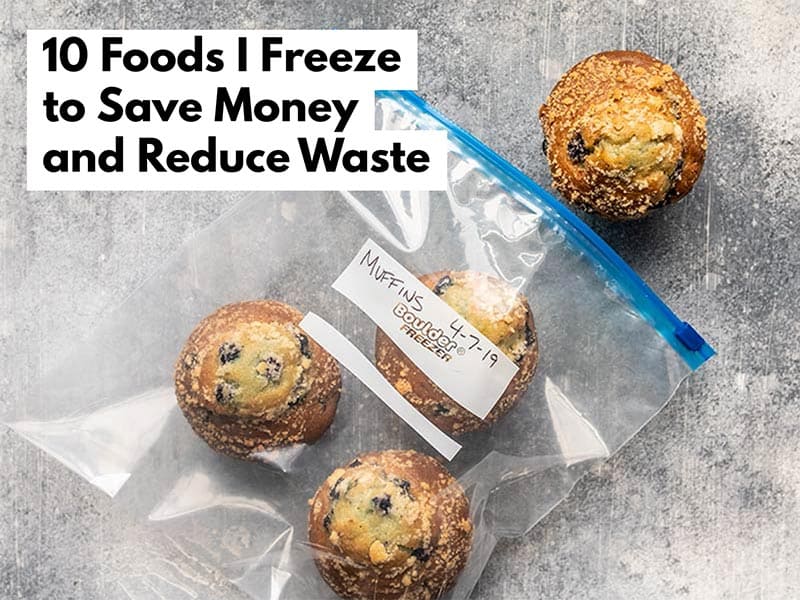
This post contains some affiliate links, which means that we make a small commission off items you purchase at no additional cost to you.
But before I get into the foods that I like to freeze, here are a few general tips for freezing food.
Quick Tips for Freezing Food
- Exposure to air is the enemy because it causes moisture to evaporate from your food, which results in freezer burn. So, wrap food tightly, use heavy duty plastic, and remove as much air as possible from bags when possible.
- Chill hot food completely in the refrigerator before transferring it to the freezer. Placing hot or warm food straight into the freezer causes larger ice crystals, which will damage the texture of the food more.
- ALWAYS label and date your food. It’s preemptive strike against frozen mystery packages in the back of your freezer, which will undoubtably end up in the trash.
- Bookmark this chart of storage times for food in the refrigerator and freezer. This will help you determine how long to keep the items in your freezer. And here is a more extensive resource for best practices when freezing food.
10 Foods I Freeze to Save Money and Reduce Waste
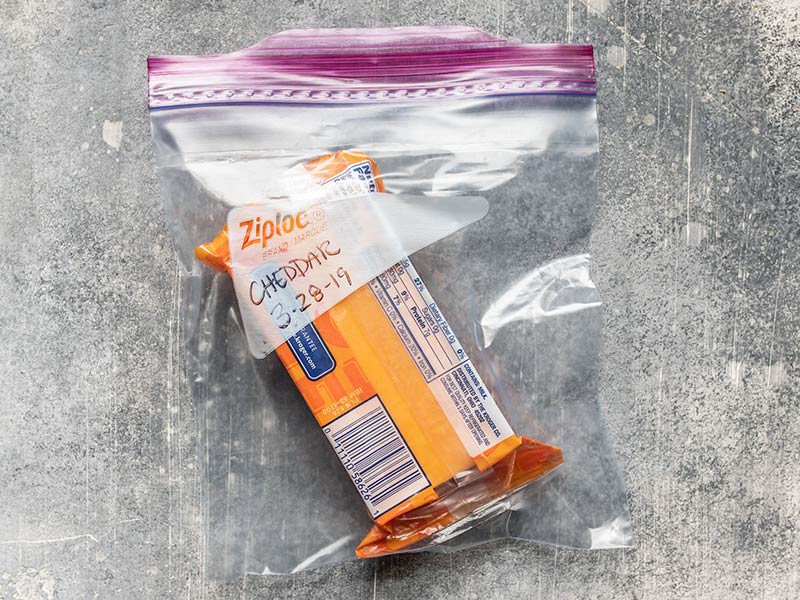
1. Cheese
Cheese is always one of the more expensive ingredients I use, so I make sure not to waste a single crumb! Plus, it’s often much less expensive if purchased in a larger quantity, like 16 oz. block or a 2 lb. bag of shreds. Luckily, cheese freezes great! You’ll notice very little, if any at all, difference in the texture after freezing and thawing. Block cheese may become slightly more crumbly, so it’s not as good for making sandwich slices, but it’s still great for shredding, melting, and other uses.
When I buy a large bag of shreds, I first divide it up into smaller portions, usually 2 cups, and freeze them individually. To thaw, I simply transfer them to the refrigerator one day before I intend to use them. I do the same for block cheese. If I buy a large block, I’ll first divide it into 8oz. portions, like the usual blocks for sale, wrap them tightly in plastic, then place them in a freezer bag. If I’m freezing a half block, like in the photo above, I’ll leave the original plastic on the cheese because it fits so tight and close to the cheese, then place the whole thing in a freezer bag.
Cheese varieties I’ve successfully frozen: cheddar (shredded and block), chevre (soft goat cheese), feta, swiss, Monterey jack/pepper jack.
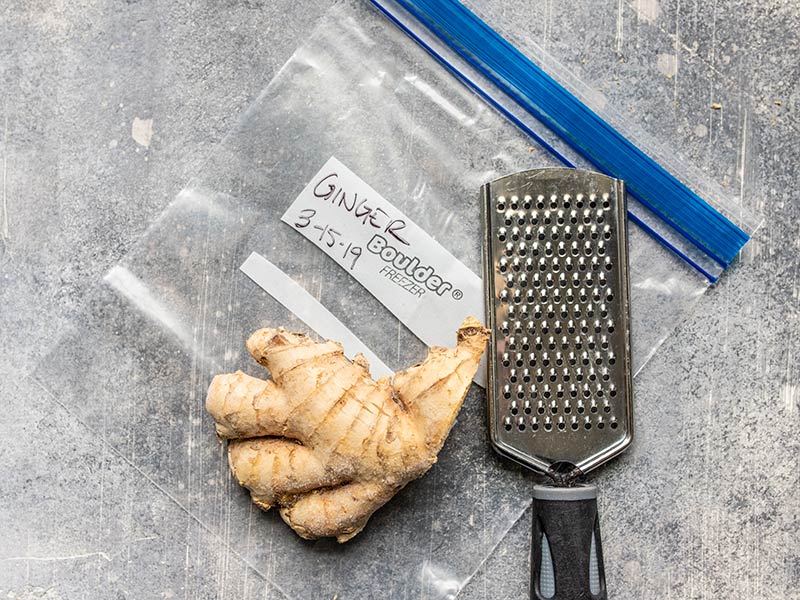
2. Fresh Ginger
I cook a LOT with ginger, but it gets soft and rubbery pretty quickly in my refrigerator. The solution? Keep a knob or two in the freezer! The flavor is exactly the same and frozen ginger grates much easier than fresh, since the hairy fibers break easily instead of clogging the grater.
You don’t have to peel your ginger before it’s used, but I do suggest washing it well to make sure there is no dirt in the nooks. If you prefer to peel your ginger, peel it before freezing. I use my ginger so often that it doesn’t have much of a chance to get freezer burn, so I simply pop it into a freezer bag. If you use your ginger a little less often, you may want to wrap it tightly in an extra layer inside the freezer bag.
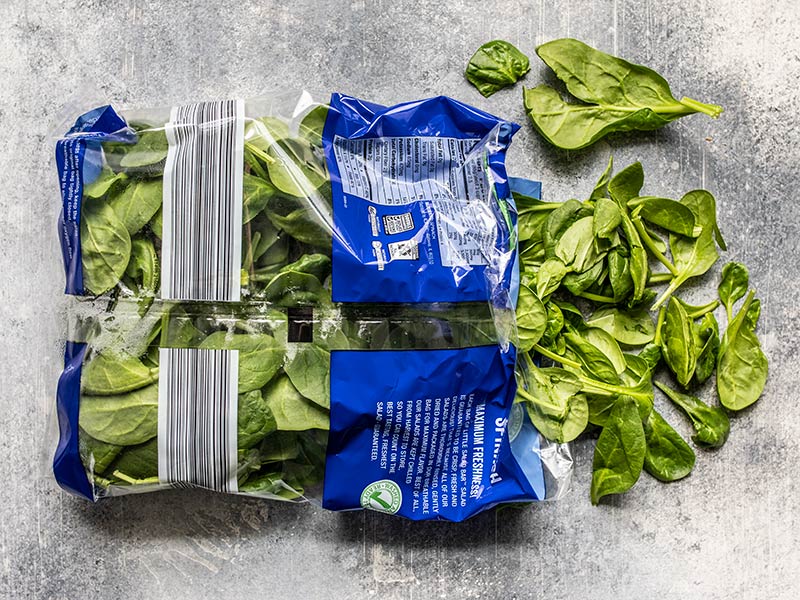
3. Fresh Spinach
We’ve all done it. Ambitiously bought a bag of spinach only to watch it slowly wilt in your fridge. Try as I might, it’s not often that I successfully finish an entire bag of spinach before it gives up its life. So when I see the spinach starting to sputter out, I’ll just place the whole bag right into the freezer. Yep! No prep needed, just put it in the freezer (inside a sealable bag).
Obviously the frozen spinach isn’t good for salads, but it works perfectly for smoothies, adding to soup, sauces, or sautéing (because it wilts when cooked anyway, right?). And because the spinach is so delicate and not dense, I don’t even thaw it before adding to my meals. It goes straight from the freezer to the soup, sauce, or wherever it’s being used.
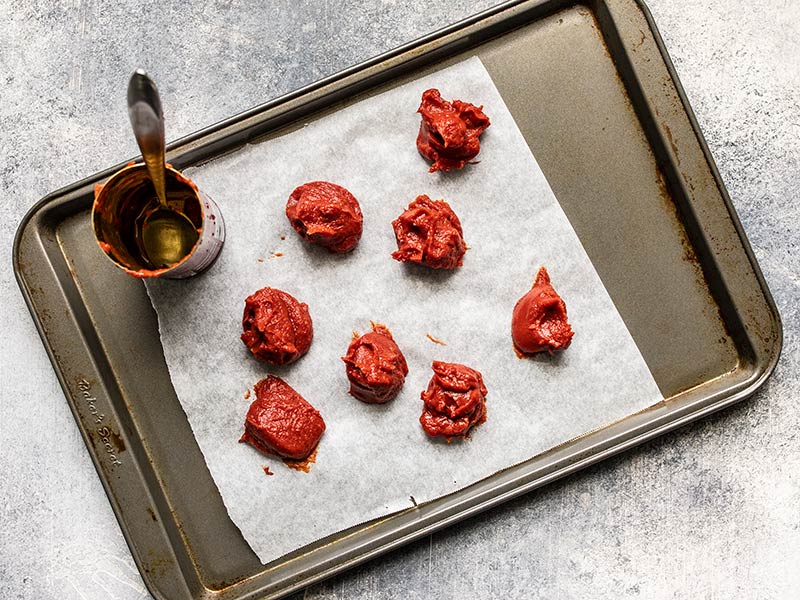
4. Tomato Paste
If you’ve been around Budget Bytes for a while, you probably already know that I freeze my tomato paste. But, since this one was such a game changer, I want to make sure anyone new here knows this trick. Most recipes only use one, or a few, tablespoons of tomato paste at a time, but one small 6oz. can of tomato paste has about 10 tablespoons in it. So what do you do with the rest? Well, you DON’T throw it away.
Portion it out into one tablespoon scoops, place them on a parchment lined baking sheet or plate, then freeze until solid. Once solid, transfer to a freezer bag. Then, whenever you need tomato paste for a recipe you can grab one, or however many you need. Again, because they’re so small, I don’t even thaw them. They go straight into my soup or sauce frozen. (See the full post: How to Freeze Tomato Paste)
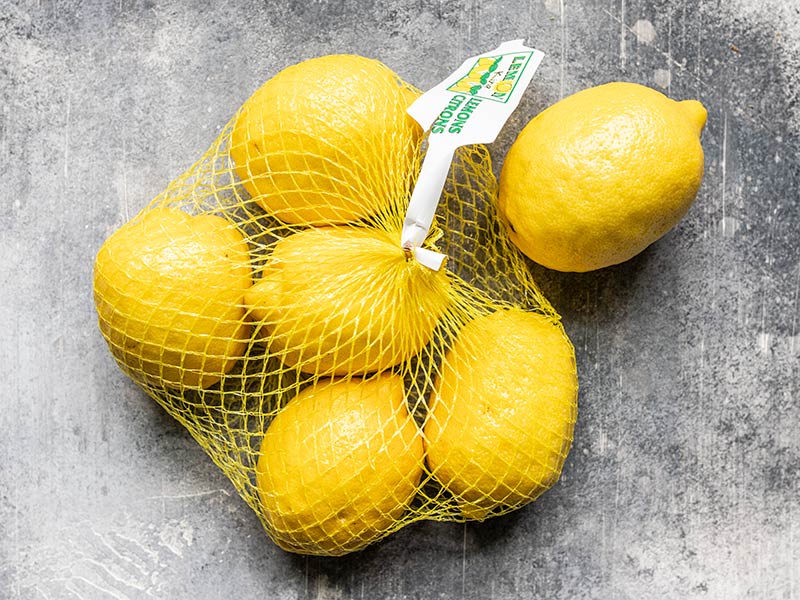
5. Fresh Lemons and Limes
Okay, this one was a recent game changer for me as well. I love cooking with fresh citrus because it can absolutely transform a dish, but it’s also quite expensive. So when I learned that you can freeze whole lemons and limes for juicing and zesting later, I was finally able to take advantage of the steep discount offered when buying a whole bag instead of one at a time. The texture of the citrus does change once thawed, so you won’t want to use them for slicing or garnishing, but they’re absolutely perfect for zesting and juicing. For more detailed instructions and tips, read my post about How to Freeze Whole Citrus.
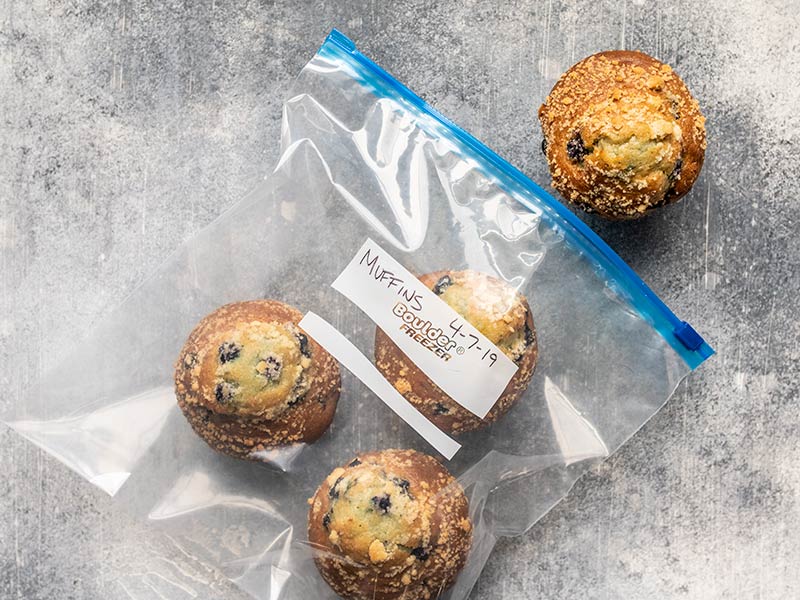
6. Bread and Baked Goods
I freeze my bread and baked goods for two reasons: to slow it from molding and to slow me down from eating it so fast! 🤣 When I lived alone, freezing my loaves of sliced bread was a life saver. Instead of having to buy a new loaf every week, I could slowly work on one loaf all month long without it going moldy. Just take a couple slices out at a time, pop them straight into the toaster from the freezer, and you’re good to go. As long as the bread is not too delicate the slices separate quite easily when frozen. If you prefer the bread untoasted, just let it sit at room temperature for about 10 minutes.
Dinner rolls, garlic bread, biscuits, muffins, croissants, quick breads (like banana bread or zucchini bread), tortillas, and just about any other bread item you can think of all freeze beautifully. There are no texture or flavor changes, and most thaw very quickly at room temperature. If your items are home baked, make sure to let them cool completely before freezing to prevent condensation and ice crystals.
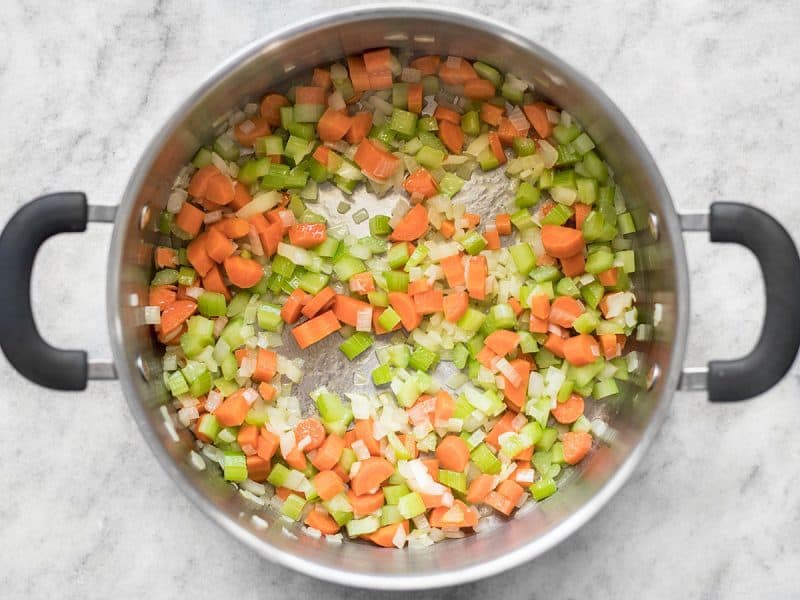
7. Leftover Vegetables
I don’t know if I’m the only one, but I always seem to have a half bag of carrots and a half bunch of celery in my fridge. Sometimes I chop them into sticks for snacks throughout the week, but the rest of the time I chop and freeze them to use in soup later. Many soups start with a mirepoix, or a mixture of onion, celery, and carrot. So it makes sense to pre-chop and freeze this mixture ahead of time, then you can just dump them into the soup pot later. Since the vegetables will get soft when sautéed anyway, the softening that occurs from freezing and thawing isn’t noticed.
This can also be done with a mixture of bell peppers and onions, which I like to sauté for use in omelets and sometimes pasta dishes. Or you can do a Holy Trinity mix (bell peppers, onion, celery), for use in Cajun style dishes.
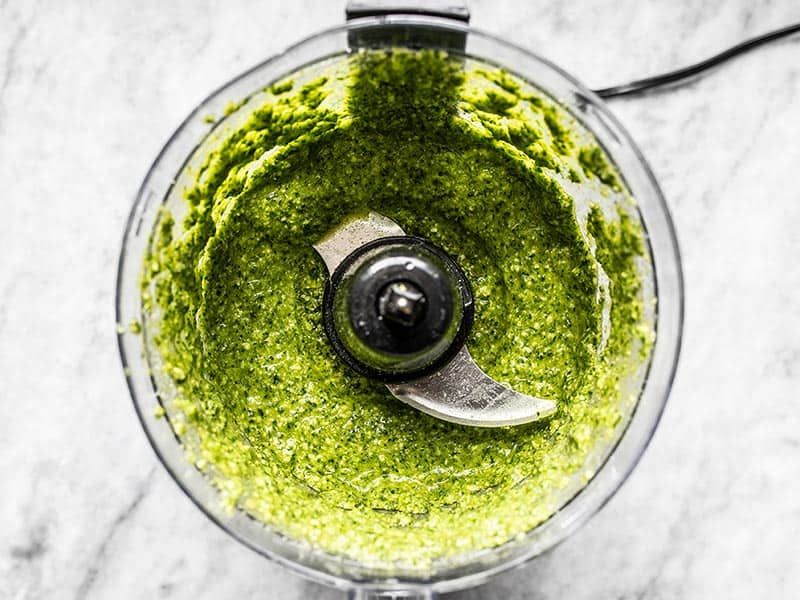
8. Pesto
Whether store bought or homemade, pesto freezes great! Which is awesome because it’s another one of those ingredients that is pretty expensive and seeing it go to waste is an absolute tragedy. To freeze your pesto, spoon it into an ice cube tray and freeze until solid, then transfer to a freezer bag for longer storage. Or, spoon it into a freezer bag, remove as much air as possible, and spread the pesto flat. Freeze it in a flat layer in the bag, then pieces can be broken off and thawed as needed.
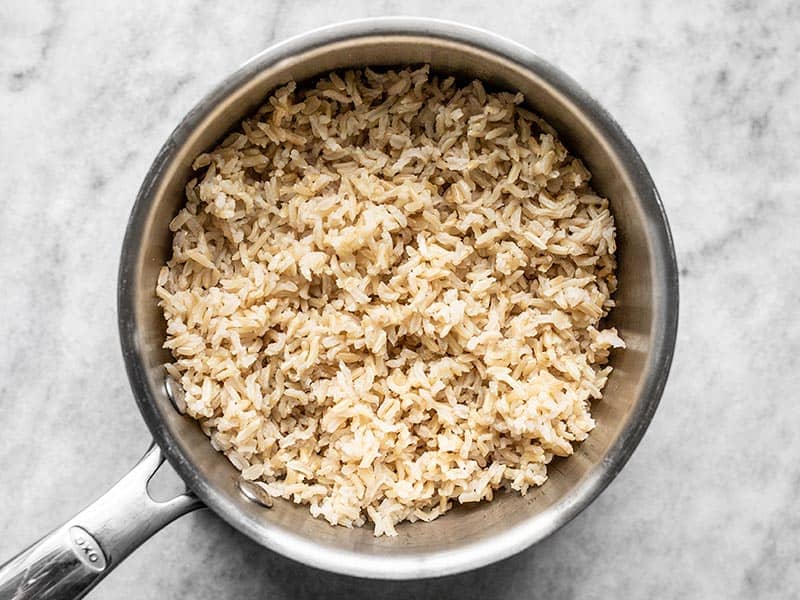
9. Cooked Rice and Grains
Batch cooking your grains, especially those with a longer cook time like whole grains, can save you a lot of time later. Cook up a large portion of rice, bulgur, quinoa, or whatever your favorite grain is, then divide into single serving portions, chill completely in the refrigerator first, then transfer to the freezer for long term storage. The frozen rice or grain thaws quickly in the microwave so you can make a fast bowl meal any night of the week!
The trick to keeping the cooked rice or grain safe is to cool it quickly and immediately after cooking. Dividing it into smaller portions before chilling ensures that it will cool fast and prevent bacterial spores from budding. I typically use quart-sized freezer bags to freeze my rice portions, again removing as much air as possible from each bag.
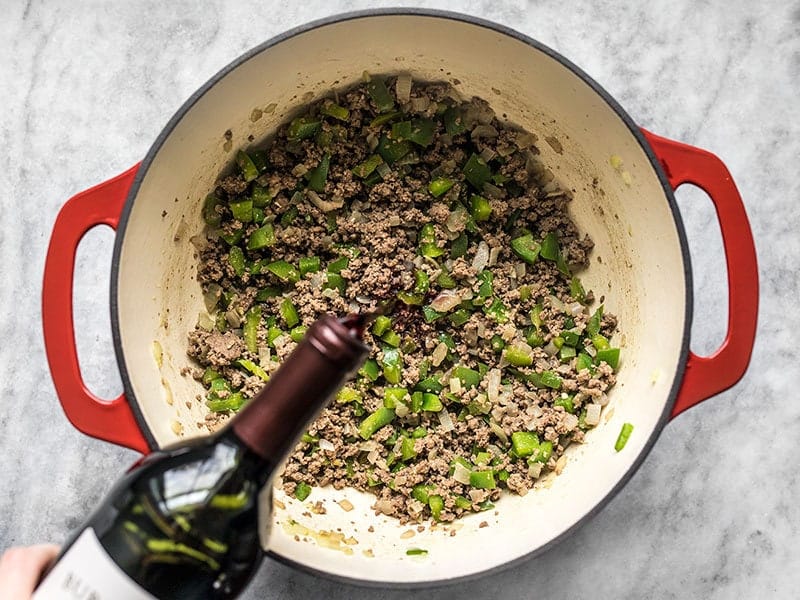
10. Wine
If you’re a lightweight like me and can’t finish a whole bottle of wine in one sitting, freezing the leftovers for cooking is a really smart trick. That way you’ll always have little portions of wine on hand for pan sauces or deglazing the pot when making stews and meat sauces. Wine creates absolute flavor magic in sauces, so if you’ve got it, don’t waste it! Pour it into an ice cube tray then transfer to a freezer bag once solid. You won’t be sorry!
What About You?
What are your favorite items to stash in the freezer for later? Share them with the group in the comments below so we can all learn from each other. :)


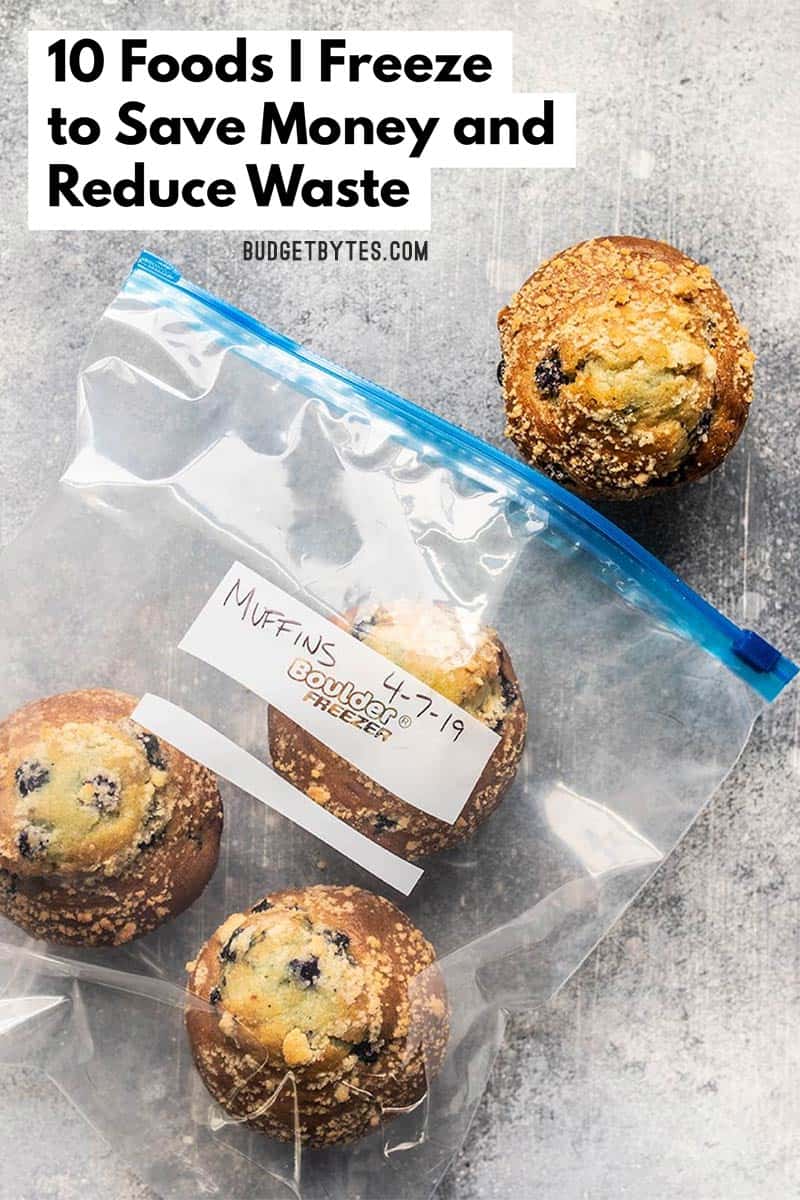
I “grate” my fresh ginger in the food processor. Then I freeze it laid out as flat as possible on a cookie sheet. When it’s fully frozen, I break it up into pieces and pop it in a freezer bag. That way I can just pull out the amount I need.
I LOVE that food processor idea!!
Hello, i take big size marmelade jars, ut them into several tiny ones … so i always have avariety of many tastes :P
I also grate fresh parmesan quickly and put the result into a zipper bag. same procedure with fresh parsley: freshly washed, dried, cutted leaves -> ziper bag. Leftovers from sauces > small jars … slices of bread freezed for Toaster … whole butter bars (better would be pre-measured cubes/bars) … slices of cake for sudden teatime … never tried fresh eggs … will certainly try the ginger !!! thanx !!! Kisses !!!
I freeze heavy whipping cream in ice cube trays. Each cube is almost exactly two tablespoons. If you want to use it for actual whipped cream, you have to thaw it in the fridge, and shake/stir it back together as it will separate, but it will still whip up just fine. Even better sometimes because it’s so cold! It’s also super handy for those recipes that call for just a bit of cream – just toss a frozen cube right into the soup/sauce just like the tomato paste mentioned above!
More things I freeze as a single-person household, besides everything everybody else has listed … cookie dough balls (bake from frozen for a quick fix of fresh cookies; just add a minute or two to the bake time), pancakes (I thaw them slightly in the microwave before popping them in the toaster for a bit), nuts, butter, fruit (if I’ve missed them at their peak freshness, I might give them a quick roast and smash them down into a sort of sauce to use over ice cream or angel food cake or something … I can freeze them in ice cube portions).
Reducing waste in the kitchen… By employing use of a ton of disposable plastic. It seems a bit counterintuitive? I have a ton of glass storage (jars and glasslock) and silicone bags – one time investment and I’ve used them over and over again. Beeswrap is great for storage as well!
As a rookie lighthouse keeper stocking up our big pantry and deep freezer, I bought a 60 lb bag of non-fat dried skim milk powder ten years ago. Yes. A little overly enthusiastic about it but it was such a good deal! It has been in my deep freezer all this time, double-bagged in heavy-duty 6 ml plastic. It works wonderfully for baking and making yogurt (add 1 cup dry milk to 2 litres of regular 2% or homogenized full-fat milk for a good Greek-style yogurt). In a pinch, if our monthly grocery helicopter is weather-delayed, I use it for coffee but yech, it simply isn’t as good as liquid milk for something as important as first thing in the morning coffee!
I’ve also frozen liquid milk but the quality can suffer as sometimes, not always, it separates into cream and milk but give the carton a good shaking, and it works. It certainly works for making yogurt and cooking it.
The lemon and lime tip is brilliant!
50 years ago, my Mom bought #10 cans of tomato paste, divided it up and froze it. When quart size ziplock came out, she used them. It made about 10 tile shaped bags. Stacked easily in the freezer. She could break off chunks as she she needed them (soup, chili, sauce for noodles, rice, grains. And the savings on cost r huge.
I’ll just add canned chipotle peppers to this list. I freeze them just like I do tomato paste – little blobs of one or two peppers with a bit of the adobo sauce.
Deb G… I had no idea! Awesome tip, thx
Thank you for sharing the frozen citrus tip! I’ve frozen the juice, but I would never have thought to freeze the whole fruit! =)
I freeze whole blocks of Parmesan cheese!
We make a double batch of pancakes and waffles on weekends and freeze the extras for weekday breakfasts before school!
I have been stashing all kinds of vegetable trimmings and bones/chicken racks in the freezer for years. Once I have my big ziploc bag full I make up homemade stock which I then put in freezer containers and use as needed.
Do you have any suggestions for freezer storage that doesn’t involve plastic bags? I’m trying to cut down on plastic bag use because it’s such a waste and not environmentally friendly. I’ve frozen stuff in glass food storage containers before and they seemed okay.
I’m about to start using those re-usable silicone food storage bags (Stasher is one brand, but there are several available now). Many of them are dishwasher safe, so it makes them super simple to use and re-use. Several people have said they also freeze in beeswax wraps, but I haven’t tried that yet. Those tend to be slightly breathable, so it would probably only be best for shorter freezer storage.
Bananas. I freeze unpeeled bananas for baking.
I have frozen tomato products, canned chipotle peppers in adobo sauce, juices and fruit syrups, and egg whites. Egg whites I used to put into bags, but I was never sure how many I had. So now I freeze them individually in small round containers, and bag them later. For tomato paste, I use dehydrated tomato powder instead. Keeps for a LONG time in the fridge!